#Ho-Chunk Nation
Explore tagged Tumblr posts
Text
@upontheshelfreviews
@greenwingspino
@one-time-i-dreamt
@tenaflyviper
@akron-squirrel
@ifihadaworldofmyown
@justice-for-jacob-marley
@voicetalentbrendan
@thebigdeepcheatsy
@what-is-my-aesthetic
@ravenlynclemens
@writerofweird
@bogleech
#Ho-Chunk Nation#native americans#Truth and Healing Commission on Indian Boarding School Policies Act#actually important#petition#sign and send#education
2 notes
·
View notes
Text
Tuesday, September 17, 2024 - Tim Walz
Yesterday the Governor returned to St. Paul for his official duties and some time spent doing debate prep in preparation for the vice-presidential debate. Before hosting a lunch in his gubernatorial role, Tim Walz traveled to Ho-Chunk Nation to meet with tribal leaders for breakfast on behalf of the campaign.
Tim Walz spent the evening preparing for the Vice-Presidential Debate with Secretary Pete Buttigieg, Former US Representative Liz Cheney, and Alyssa Farah Griffin.
~BR~
#kamala harris#tim walz#harris walz 2024 campaigning#policy#2024 presidential election#legislation#united states#hq#politics#democracy#ho-chunk nation#vice presidential debate#pete buttigieg#liz cheney#alyssa farah griffin#minnesota
0 notes
Text
so in honor of indigenous people day I wanted to share a little bit about a local tribe here in Wisconsin: the Ho Chunk nation. [Official site] As with many tribes, up until the early 90's they were given the misnomer 'Winnebago' - a word that actually refers to the wetlands, and not the nation or the tribes.
This nation is just really cool in general, but I want to start with the fact that this nation is actually comprised of 2 moieties - those-who-are-above and those-who-are-on-earth. This breaks down into 12 clans, and each individually has responsibilities for the Nation relating to judicial, health, safety, and civic government. The ancestral lands even spread from Wisconsin to Illinois, Iowa, Minnesota, and Missouri. Due to this, the 12 clans are not only located in Wisconsin, but also the named states before.
The nation actually is the biggest employer in two Wisconsin counties, as well.
As of right now, the Ho Chunk Nation is currently headed by President Jon Greendeer, a role that has a term of 4 years, and the power from there is modeled after their traditional Chief and Clan system.

This nation also created the Hocąk language, which became the base for 15 other languages. Thanks to this fact, one of the names the Ho Chunk also go by is 'People of the Big Voice'. Despite the efforts of genocide from the US Government during colonization, this nation has been on these lands according to their oral traditions for at least 3 ice ages.
If you're ever in the driftless area and can stop at the Effigy Mound National park, these Effigies were from the Ho Chunk's past.

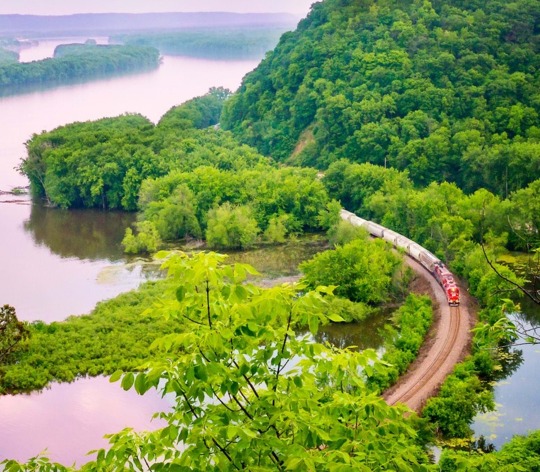
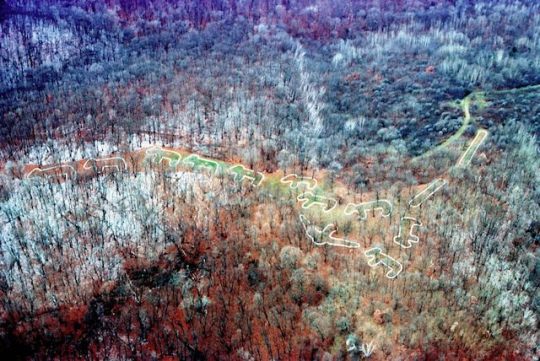
#it's been like 8 years since i've written anything like this so it's stilted as fuck#indigenous rights#indigineous people#indigineous people day#ho chunk nation#ho chunk
30 notes
·
View notes
Text
Ho-Chunk are part of Wisconsin’s living history
After a period of forced removal in the mid-1800s, the Ho-Chunk people continue to shape Wisconsin’s culture and economy.
By Richelle Wilson– Wisconsin Public Radio When Josie Lee from the Ho-Chunk Nation looks at Wisconsin today, she sees the impact of her tribe on the state. “If it weren’t for Ho-Chunk people, we wouldn’t have the state as it exists today,” Lee told WPR’s “Wisconsin Today.” “You wouldn’t have such a large agricultural industry with cranberries if it weren’t for seasonal Ho-Chunk migrant workers…
#afternoon update#culture of Wisconsinites#Ho Chunk Nation#Ho-Chunk Nation Museum Cultural Center#Wisconsin Public Radio
0 notes
Text
Indigenous People's Day

DR. HENRIETTA MANN Cheyenne
On this Indigenous Peoples' Day, we are featuring Matika Wilbur’s recent publication Project 562: Changing the Way We See Native America, published by Ten Speed Press in 2023. Wilbur (b. 1984) is a visual storyteller and member of the Swinomish and Tulalip peoples of coastal Washington. She holds a degree from the Brooks Institute of Photography alongside a teaching certificate that has shaped her style of educating through narrative portraits.
Project 562: Changing the Way We See Native America, a book born from a documentary project of the same name, resolves to share contemporary Native issues and culture. In 2012 Wilbur set out from Seattle to visit and photograph all 562 plus Native American sovereign territories in the United States.
Wilbur’s engagement with the communities she visited resulted in the creation of hundreds of dynamic portraits and documentation of conversations about “tribal sovereignty, self-determination, wellness, recovery from historical trauma, decolonization of the mind, and revitalization of culture.” She refers to her portraiture approach as “an indigenous photography method” that includes several hours and sometimes days of interaction with the participants, an exchange of energy and gifts, and asking sitters to choose their portrait location. The outcome is a stunning collection of Native narratives and portraits.

GREG BISKAKONE JOHNSON Lac Du Flambeau Band of Lake Superior Chippewa Indians

HOLLY MITITQUQ NORDLUM Iñupiaq

J. MIKO THOMAS Chickasaw Nation
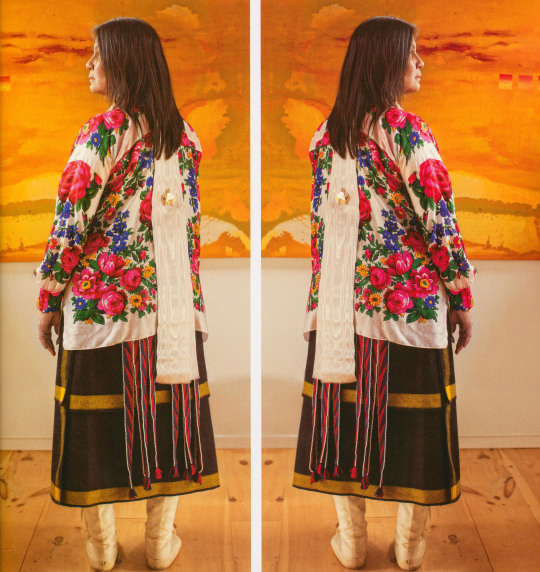
MOIRA REDCORN Osage, Caddo

HELENA and PRESTON ARROW-WEED Taos Pueblo/Kwaatsaan, Kamia
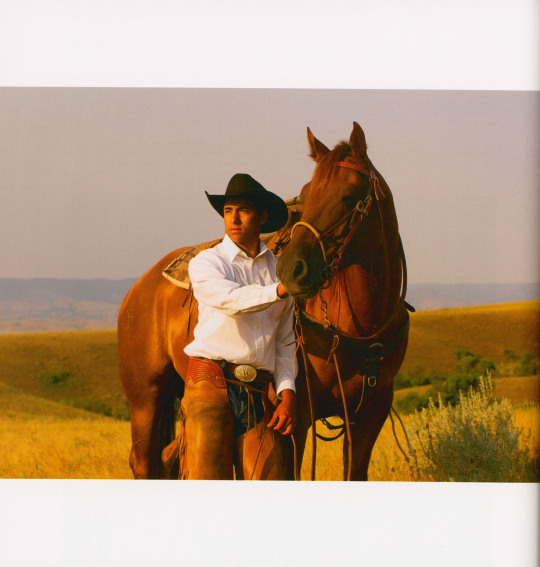
STEPHEN YELLOWTAIL Apsáalooke (Crow Nation)
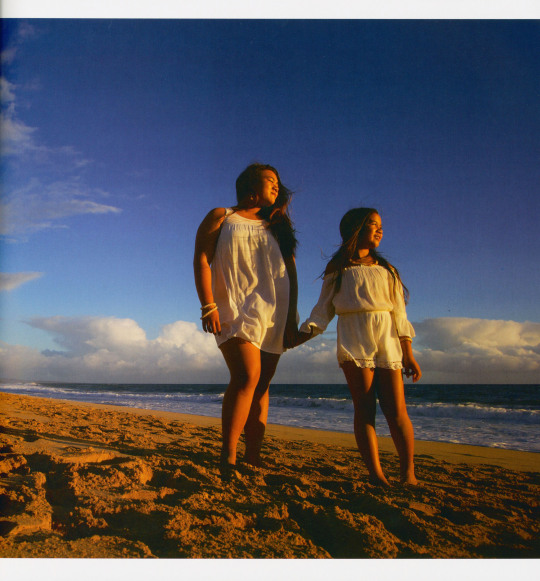
LEI'OHU and LA'AKEA CHUN Kānaka Maoli
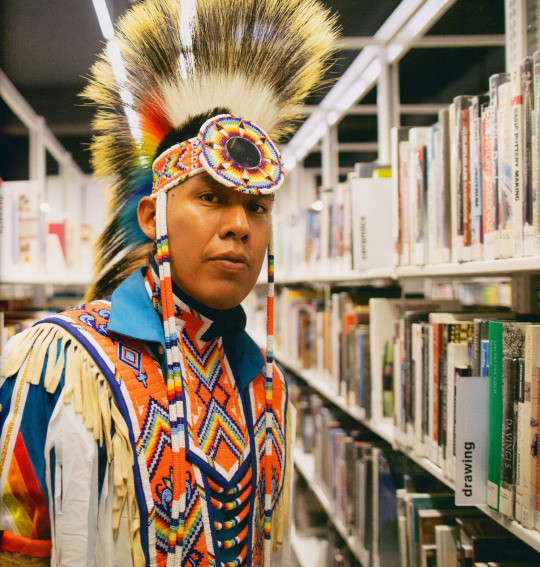
ORLANDO BEGAY Diné
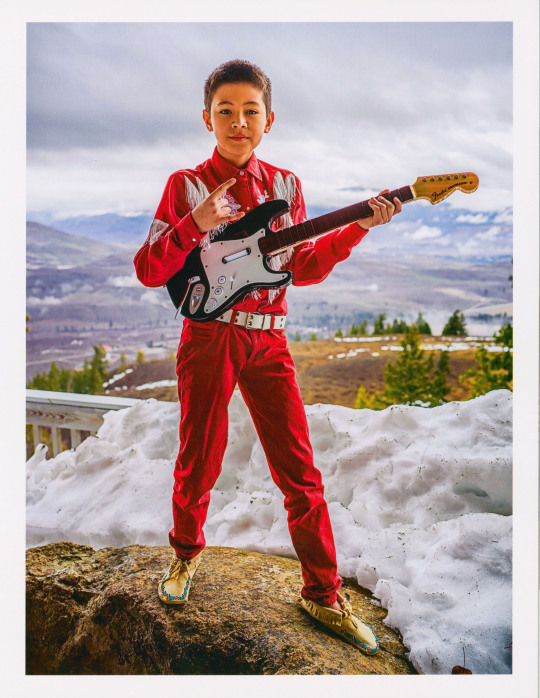
KALE NISSEN Colville Tribes

GRACE ROMERO PACHECO Santa Ynez Band of Chumash Indians

ISABELLA and ALYSSA KLAIN Diné
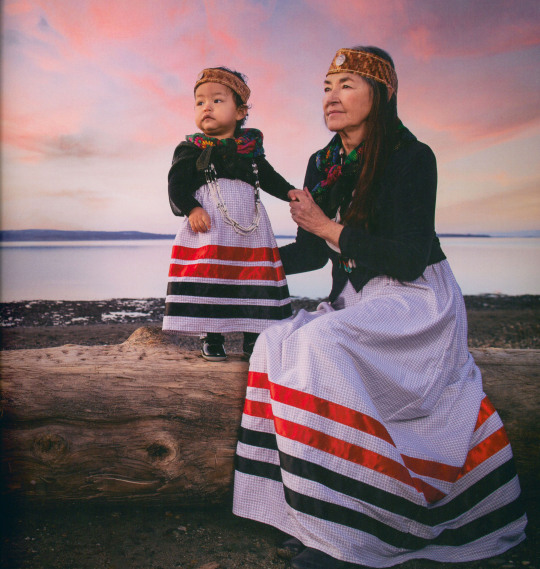
NANCY WILBUR Swinomish
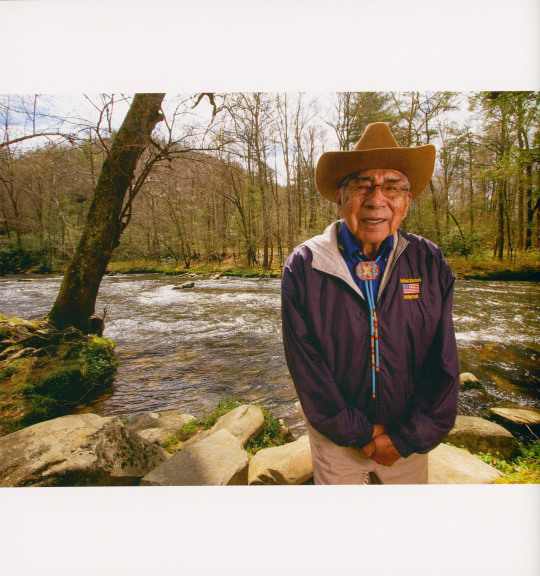
DR. JEREMIAH "JERRY" WOLFE Eastern Band of Cherokee Indians
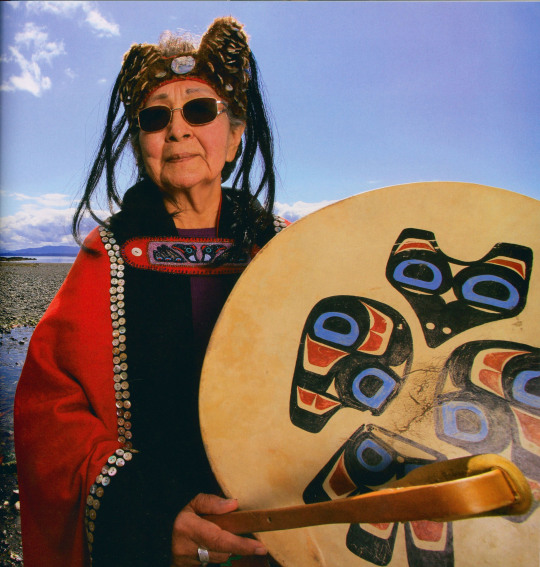
RUTH DEMMERT Tlingit
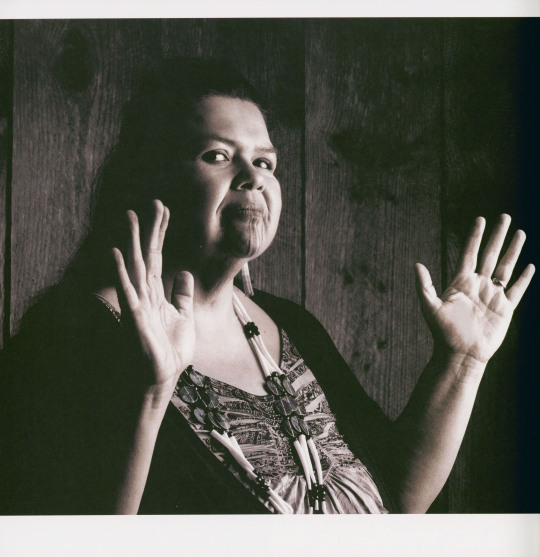
MARVA SII~XUUTESNA JONES Tolowa Dee-Ni' Nation, Yurok, Karuk, Wintu
Matika Wilbur will be speaking on UW-Milwaukee's campus Thursday, November 16 from 6-7p.m. in conjunction with her exhibition Seeds of Culture: The Portraits and Voices of Native American Women on view at the Union Art Gallery November 16 through December 15, 2023.
-Jenna, Special Collections Graduate Intern
We acknowledge that in Milwaukee we live and work on traditional Potawatomi, Ho-Chunk, and Menominee homelands along the southwest shores of Michigami, part of North America’s largest system of freshwater lakes, where the Milwaukee, Menominee, and Kinnickinnic rivers meet and the people of Wisconsin’s sovereign Anishinaabe, Ho-Chunk, Menominee, Oneida, and Mohican nations remain present.
#indigenous peoples' day#matika wilbur#project 562#Ten Speed Press#Native Americans#holidays#UWM Native American Literature Collecton
850 notes
·
View notes
Text
As someone who's been secretly teetering around the SAGAU (that's "Self-Aware Genshin AU" for those who aren't aware 🥁) tag and works while thoroughly enjoying a lot of them, I think today's finally the day I put my own two cents in on it. Particularly, my two cents about how a certain redheaded owl stud would act in that verse. By all means, no hate to anybody who's written him any differently in their SAGAU stuff-- we're all here to have fun and junk; this is just how I personally think he'd be. You are free to disagree with any and everything I have to say under the cut, but I will have no badmouthing or the like.
Being perfectly honest, I haven't really seen much of Diluc in a ton of SAGAU works outside of him either being part of the "get the 'Imposter'" mob or individually attacking us if he comes across us solo and isn't in the know that we the reader are the real deal. Basically, he's more or less just kinda lumped in with the other highly devoted followers of the Creator without really standing out much in the plot. And, nothing particularly wrong with that, no, no, no, but here's where my hee-ho funny hot take comes in:
I don't actually think Diluc would really worship the Creator. In fact, I don't think he'd even like us at first. *Sojiro voice* Let me explain!
Diluc Ragnvindr is, in every sense of the word, a disenchanted young man. Now, we know he wasn't born as such, but we have the Knights of Favonius disgracing Crepus' death while the wound was still fresh and the falling out between Diluc and Kaeya upon the latter's revelation as a Khaenri'ahn spy to blame for that. Blah, blah, blah, that's right, we heard the story, over and over again, so, where does this tie into my personal interpretation of his thoughts on the Creator, you may ask? Well!
In the happier, more idealistic years before all hell broke loose on his 18th birthday, Diluc most likely did worship and revere the Creator per his upbringing since I think Crepus also worshipped them like a good chunk of Mondstadt does. No problems there. But, where was the "all-powerful, ever-benevolent" God of Teyvat when he'd lost his father and brother on that same, horrible night in different ways? What did they do when the Knights of Favonius openly spat on his father's name just to save their undeserved reputation? What did they give him during that four-year suicide mission he spent indiscriminately hunting Fatui agents before promptly getting the ban of a lifetime from the entire Nation of Cryo?
Nowhere, nothing, and radio silence.
Just another unreliable let-down added to the list, and another knife to his back.
(Imposter AU-wise) So, come present day, when the Great Big Phony™ drops and takes a throne that very much does not belong to them, everybody's over the moon and pulling out all the stops for their beloved God... except Diluc. Now, he's not so stupid that he openly badmouths the apparent Creator since that would get him some pretty unpleasant looks and land him in rather hot water, so instead, he shows no open reaction while rolling his eyes and scoffing at them wherever people can't see or hear. And, if we're going with the traditional portrayal of the Imposter being an uncaring tyrant, his already diminished opinion of the Creator's image is only further soured. He does nothing to damper or criticize anybody's faith since it's far from his place to, but they certainly won't see him joining in any day of the week, either.
And then comes the "Imposter", who's actually the true Creator that's been jiffy-popped into Genshin's world from the real one. Now, while he thinks it's beyond ridiculous that the people of Mondstadt and the Knights of Favonius (though, not as much surprise for the latter-- always so inefficient...) find it just to hunt down and torture somebody solely for looking like the Creator especially since nobody in town gives a shit that Venti and Barbatos look disturbingly alike for reasons only he (plus Jean and maybe Kaeya, if his Hangout implies anything) knows without actually presenting themselves as an active threat to humanity like, say, the Abyss Order or the Fatui, Diluc still can't help but secretly hand it to the alleged Imposter for being the first to have the guts to knock that "divine do-nothing" down a peg in some way, even if it is considered quite the risky move.
Should he encounter us while we're running for our lives worse for the wear for the above reason (and truly confirming that we mean no real harm and are just a victim of very unfortunate circumstance), Diluc is open to helping us get away safely under the radar and giving false info to the KoF like he did in his Story Quest since getting caught helping Teyvat's most wanted by the mob would not end well for him, either. And, he's pretty amicable when patching us up... but then he sees the dried gold blood and scars all over our body and realizes exactly who we really are. No, he doesn't do a full 180 and start blastin', but Diluc sure is now a lot colder towards us than he already is in general. Still helps us out, but we can taste the sudden mood drop. At some point, we discover his resent towards us for (from his perspective; can't exactly explain that we didn't actually make any of the characters' backstories since we're not HoYoverse and whatnot bc that wouldn't make sense to anyone in Genshin within the confines of the Creator!Reader AU without us sounding completely crazy) being seemingly nowhere to be seen around his and others' suffering despite being the God of All Gods capable of doing literally anything to help it, but simply choosing not to. Even if the Reader rightfully says they didn't do anything, Diluc's cold rebuttal is something along the lines of "No. You didn't.", and it's not the least bit reassuring.
If he were to stick around with us a bit longer during our escape from Mondstadt/whirlwind journey, then Diluc would come to understand that we really weren't as in control of everything bad happening to him or the world as he initially believed, especially if in his misguided blaming, it causes Reader to develop one HELL of a guilt complex feeling like they are responsible for fixing everything if it means putting an end to all the nonsense and abuse some of their once-beloved characters/acolytes are putting them through. Granted, the actual Imposter does have to be stopped and dethroned for all the shit they're pulling, but that's really all that falls on us as the unfortunate hero.
Other than that condition, though, we basically have someone that's thankfully not looking to hunt us down for absurd reasons and even helps us in our need, but at the same time curses us for letting him and many others down by not acting in some way when it mattered most.
#SAGAU#Genshin SAGAU#SAGAU Diluc#Imposter AU#SAGAU x Reader#(Had to rewrite this bc I accidentally deleted it; gdi)#idk if I should tag this as specific character x reader bc it's rly not#Just me brainstorming and junk for better wording#And again; merely my personal interpretation; it is not meant to discredit or diss any other ones
152 notes
·
View notes
Text
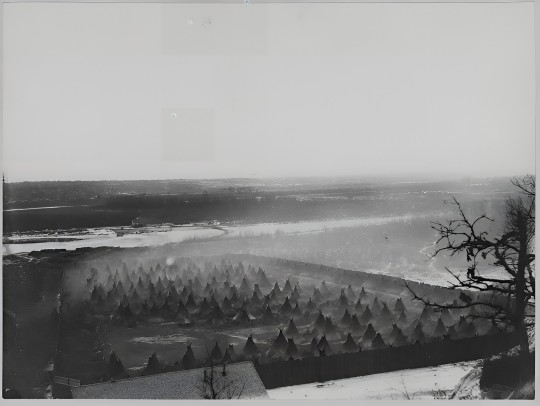
The image depicts a concentration camp at Fort Snelling, Minnesota, around 1862 where Dakota people were held after the Dakota War of 1862. Key information includes : It was built between 1820 and 1825 to protect the northern borders and control development in the territories. It served as a mechanism for treaties and the distribution of Dakota lands, leading to the displacement of the indigenous population. During the Dakota War of 1862, it was the primary center for U.S. government forces and the site of a concentration camp for Dakota and Ho-Chunk non-combatants. Approximately 1,600 Dakota people, including women and children, were interned in the camp. Hundreds of people died in the camp during the winter of 1862-63. Survivors were eventually removed to a site in South Dakota. The fort is a National Historic Landmark and a site of conscience, representing both pride and struggle. Today, multiple government agencies manage portions of the former fort, with the Minnesota Historical Society administering the Historic Fort Snelling site ...
6 notes
·
View notes
Text
Native American Heritage Month at UWM Archives
In honor of Native American Heritage Month, we offer this selection of materials from our collections that begin to illustrate Native American presence and power at UWM.

📸: Sandra Harris Tran tables for the Native American Student Movement (NASM) at UWM, circa 1980. The NASM has been a key vehicle for Native student organizing, support, and expression since the late 1960s. NASM is now known as the American Indian Student Association. Call Number: UWM Photographs Collection, UWM AC 6, Box 18.

📸: A Milwaukee Sentinel clipping pictures American Indian students organizing for a dedicated academic program outside Chapman Hall in 1971. Call Number: UWM University Communications & Media Relations Records, UWM AC 134, Box 2.

📸: The cover to a 1974 catalog shows the fruits of Native student organizing in the form of the UWM Native American Studies Program (now American Indian Studies). Call Number: UWM Office of the Chancellor Records, UWM AC 46, Box 54.
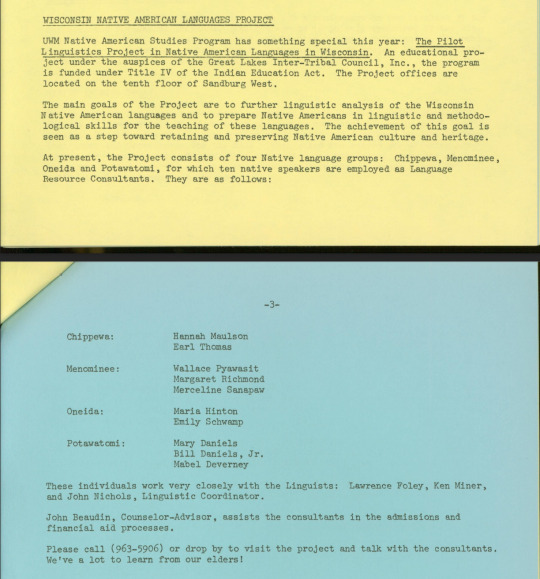
📸: The UWM Native American Studies Program announces the pilot of the Wisconsin Native American Languages Project (WNALP) in 1974. This announcement is from "Anishinaabe News: UW-Milwaukee American Indian News," a newsletter of the Native American Studies Program and NASM. Call Number: UWM Office of the Chancellor Records, UWM AC 46, Box 54.

📸: Margaret Richmond offers language instruction to a class of Native "youngsters" as a Menominee Language Resource Consultant for the WNALP in 1976. Call Number: UWM Photographs Collection, UWM AC 6, Box 18. The earlier Native American Studies Program WNALP announcement anticipates an appropriate caption: "We've a lot to learn from our elders!"
In cooperation with the Great Lakes Intertribal Council, UWM Archives stewards the Wisconsin Native American Languages Project Records, 1973-1976 (UWM Mss 20). With extensive instructional materials from the WNALP, the collection continues to serve as an important resource for the study and revitalization of Wisconsin's Native languages for citizens of Wisconsin's Ojibwe, Menominee, Oneida, Potawatomi, and Ho-Chunk nations.
#uwm archives#Native American Heritage Month#Native American Studies#Ojibwe#Menominee#Oneida#Potawatomi#Ho-Chunk#teaching#learning#language revitalization#archives#special collections#uwmdistcoll#history#photography#newspapers#Wisconsin history#Milwaukee history#uwm#American Indian Studies
14 notes
·
View notes
Text
Carte des tribus autochtones d’Amérique
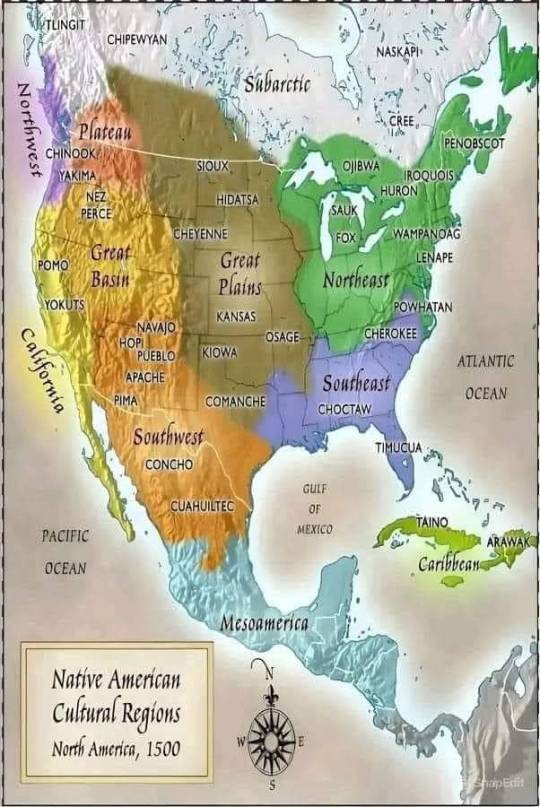
Les ancêtres des Amérindiens actuels sont arrivés en Amérique du Nord il y a environ 15 000 ans. En conséquence, une grande diversité de communautés, de sociétés et de cultures s’est finalement développée sur le continent au fil des millénaires. La population des peuples autochtones des Amériques avant le voyage de Christophe Colomb en 1492 était de 70 millions 562 tribus habitaient le territoire contigu des États-Unis. Les dix plus grandes tribus indiennes d’Amérique du Nord : les Arikara, les Cherokee, les Iroquois, les Pawnee, les Sioux, les Apache, les Esquimaux, les Comanches, les Choctaw, les Cris, les Ojibwa, les Mohawk, les Cheyenne, les Navajo, les Seminole, les Hope, les Shoshone, les Mohican, les Shawnee, les Mi’kmaq, les Paiute, les Wampanoag, les Ho-Chunk, les Chumash, les Haida. La carte donne une perspective des jours heureux les Mayas et des Aztèques ont pris fin bien avant les tribus de l'intérieur des terres d'autres régions, certaines d'entre elles résistant encore presque jusqu'au 20e siècle. À une époque, les peuples autochtones, qui comptaient des millions de personnes, parlaient près de 4 000 langues. La conquête européenne des Amériques, qui a commencé en 1492, s'est terminée par une forte baisse de la population amérindienne à cause des épidémies, des hostilités, du nettoyage ethnique et de l'esclavage. Lors de la fondation des États-Unis, les tribus amérindiennes établies étaient considérées comme des nations semi-indépendantes, car elles vivaient généralement dans des communautés séparées des immigrants blancs.
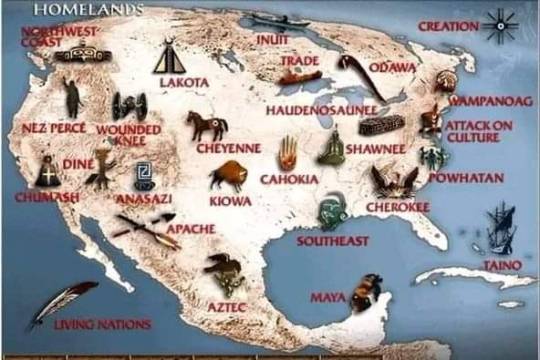

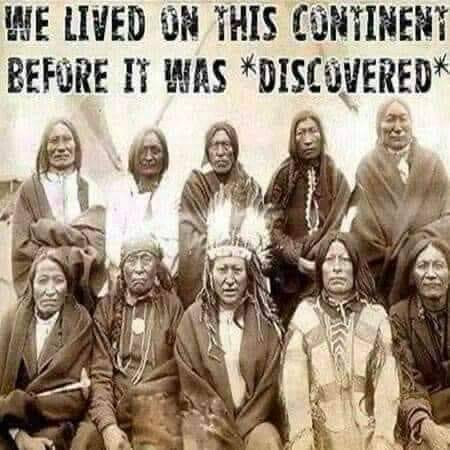

culpture de 4,5 m dans le Dakota du Sud Dignité à été réalisée par l'artiste Dale Lamphere pour honorer les femmes de la nation sioux
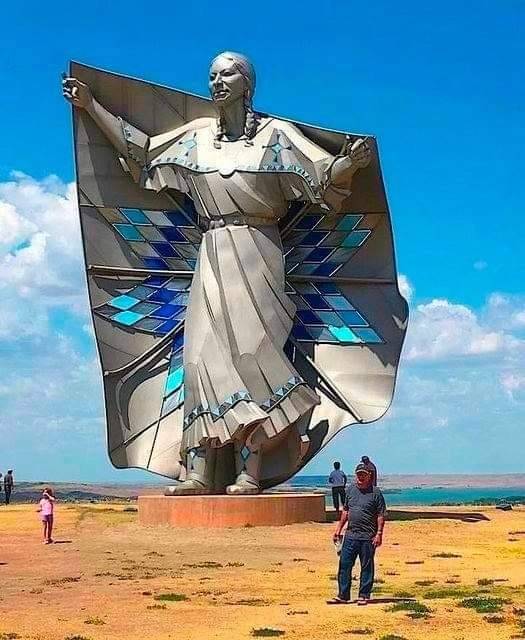
14 notes
·
View notes
Note
What tribe is Danny from?
He is from the Ho-Chunk Nation!
7 notes
·
View notes
Text
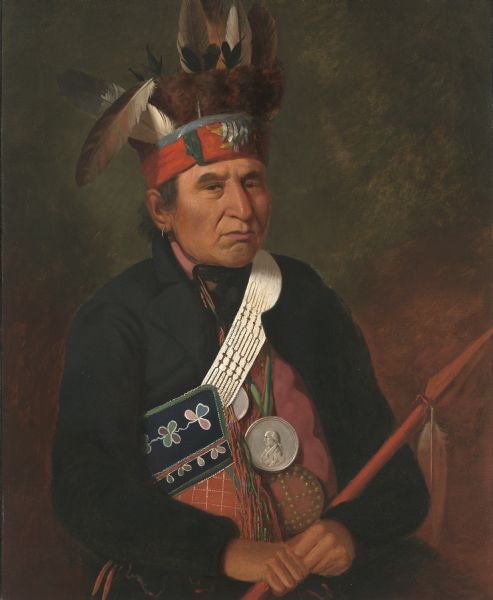
A portrait of Chief Souligny of the Menominee (Wisconsin Historical Society). Undated, but credited to the English-born American artist Samuel Marsden Brookes (1816-1892).
I can't find any information about Souligny other than what the Wisconsin Historical Society provides: that he was named after his French great-grandfather, and he was an ally of Tecumseh who sided with the British in the War of 1812. He later changed his loyalty to the United States, and he is shown wearing a James Madison Peace Medal.
Yesterday I picked up Tecumseh and the Prophet: The Shawnee Brothers Who Defied a Nation by Peter Cozzens from the library. I'm currently reading the section in the book about the battle for Fort Meigs, which is eye-opening. But there's nothing in the book's index about Chief Souligny. Maybe he was a very minor figure in Tecumseh's confederacy, I don't know.
It's frustrating and it feels like a symbol of how hard it is to learn the specifics of Indigenous participation in the War of the 1812: and there was a lot of it, especially on what was then the northwestern frontier of the United States. Many First Nations allied with the British against the expansion of US settlements, and in many War of 1812 battles there are a substantial number of Indigenous warriors, who are sometimes in the majority with British regulars and USAmerican army or militia as the other forces.
There are yearly reenactments of the Siege of Prarie du Chien in the War of 1812, but if you look up pictures you won't see any Menominee, Ho-Chunk, or Meskwaki—who were the vast majority of participants. If they're present they never seem to be in the photos.
#war of 1812#chief souligny#menominee#indigenous#samuel marsden brookes#tecumseh#fort meigs#military history#us history#wisconsin#i almost went to the native american museum in the wisconsin dells#but apparently it's just a tourist trap and gift shop#warof1812posting on a friday night
62 notes
·
View notes
Text
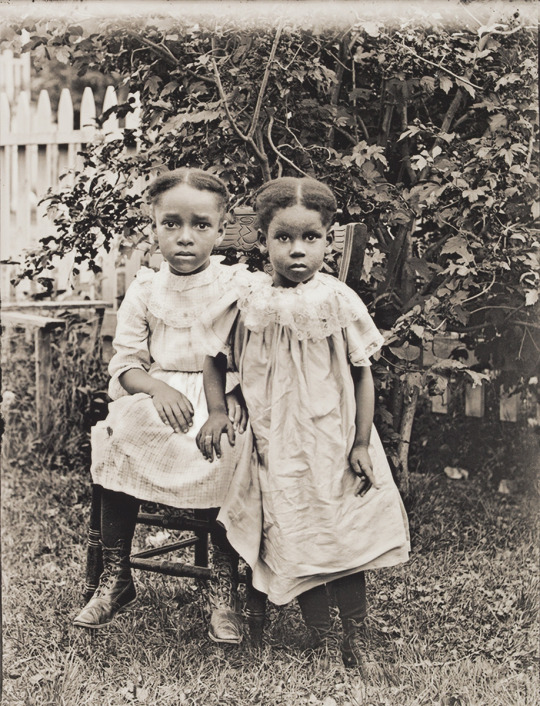
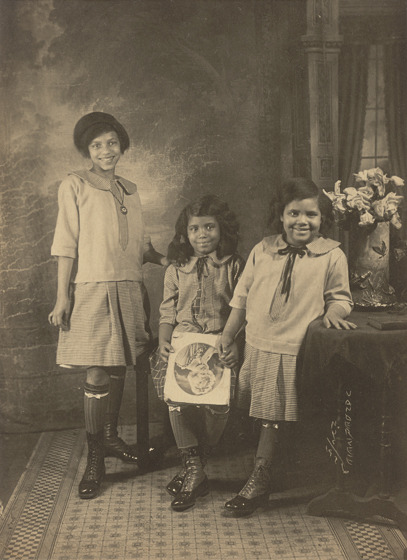
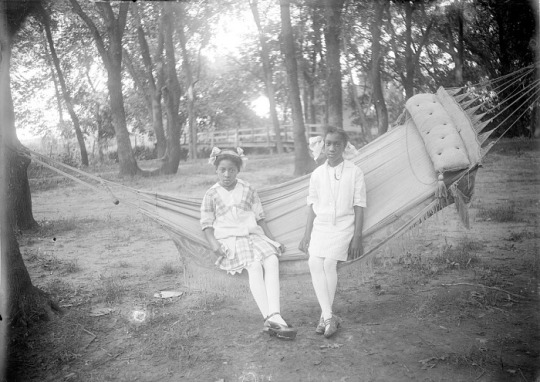
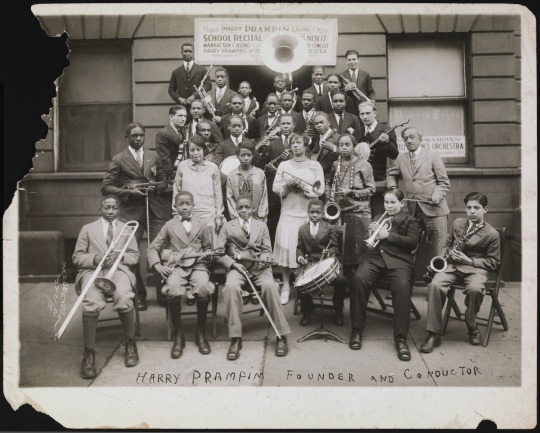
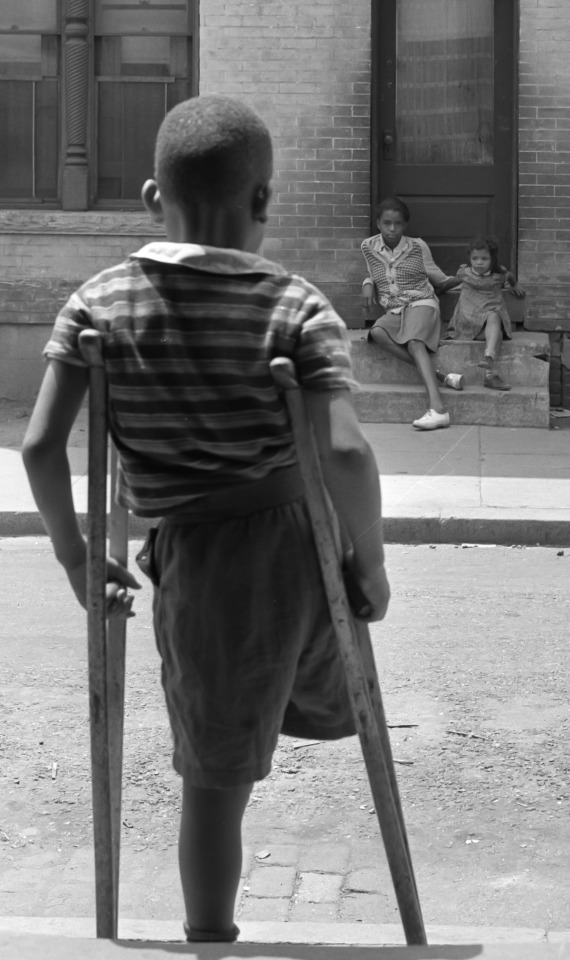
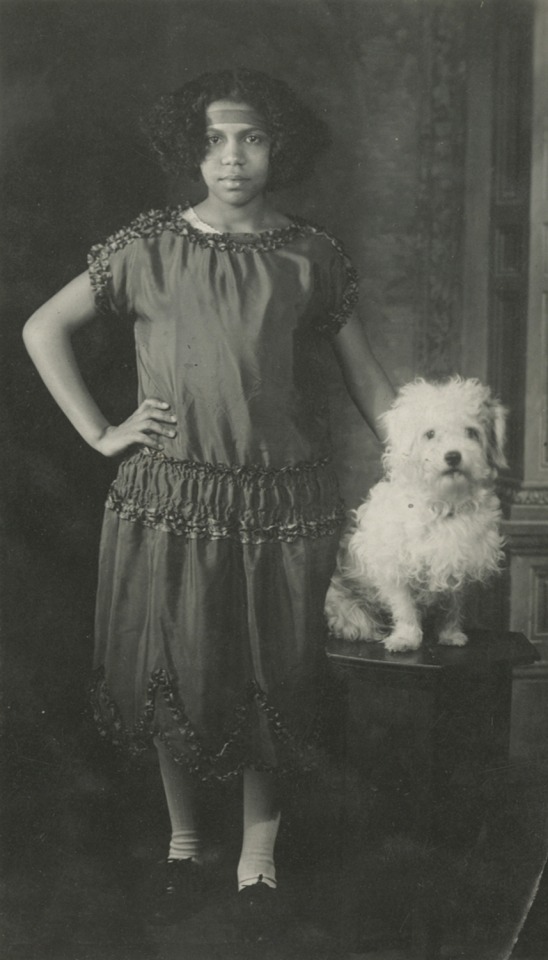
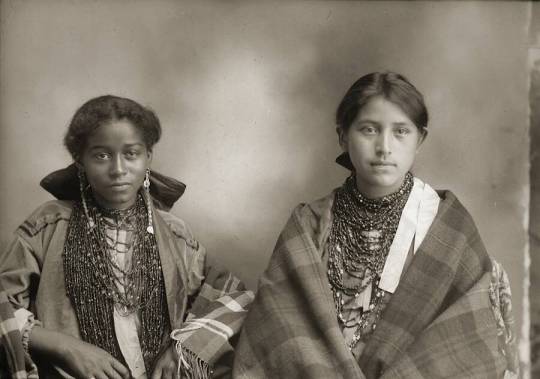

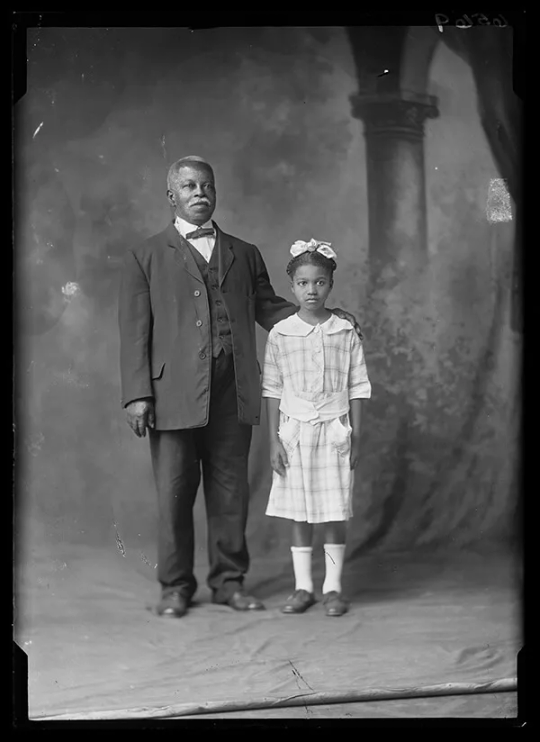
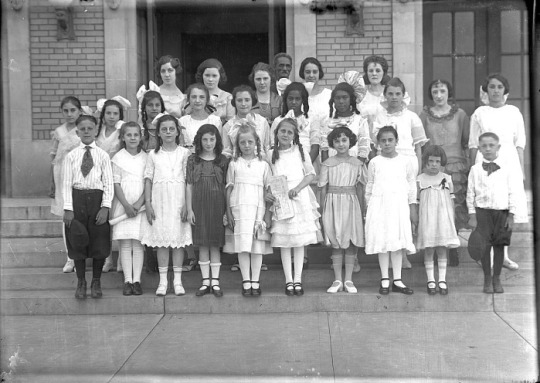
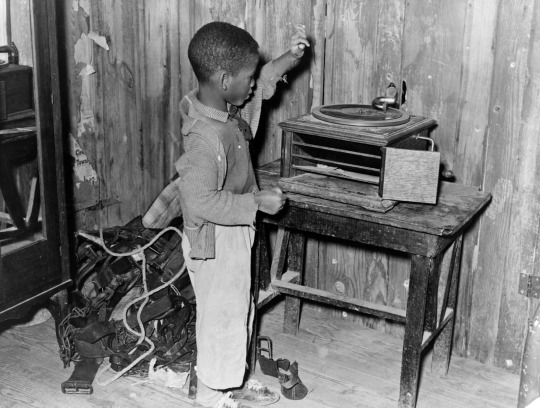
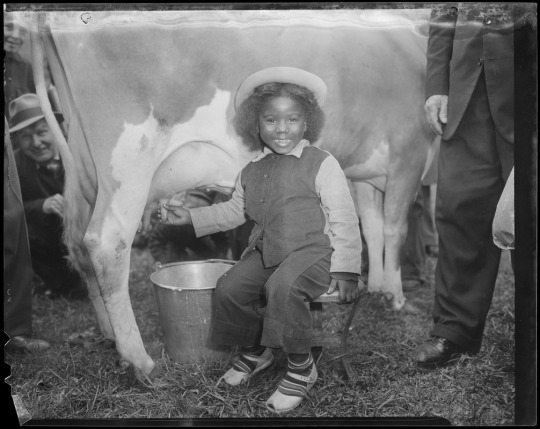



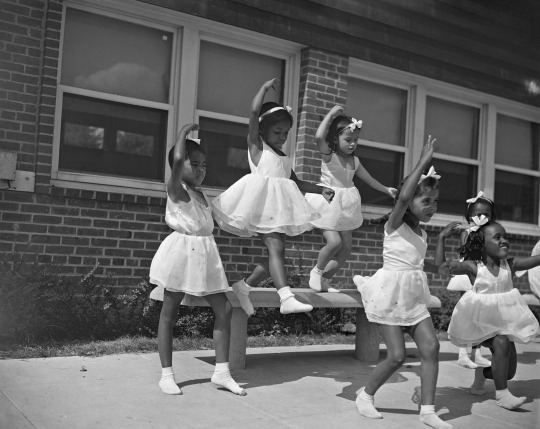
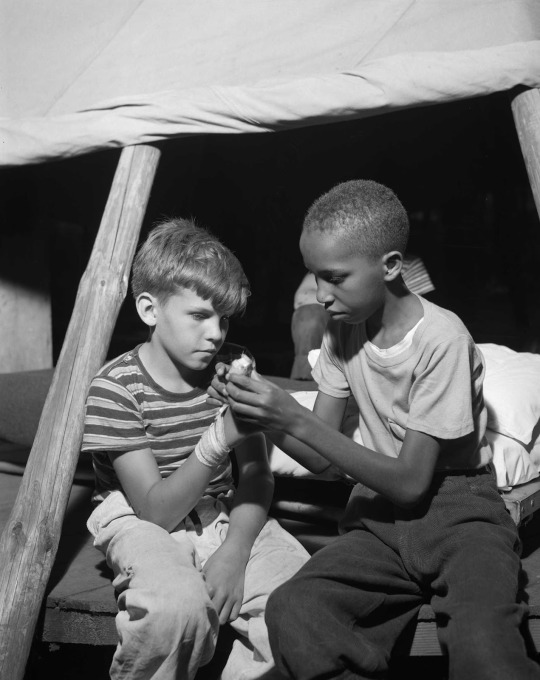
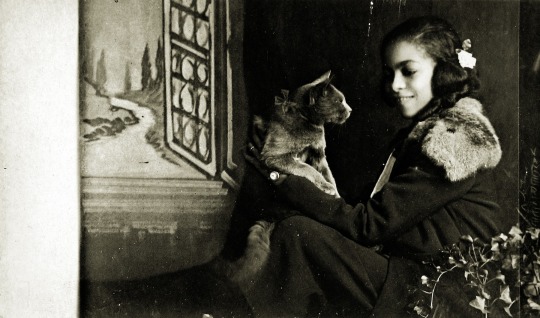
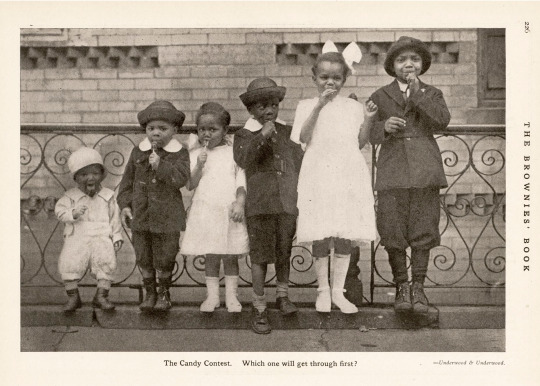
How do the memories and magic of children disrupt and upRoot the histories we tell ourselves? How do children navigate spaces of oppression and liberation? How do they find joy and hope in places that were not created for them to exist? They live.
(1) Portrait of two young Jackson girls in wrinkled, informal wear. Potentially the descendants of emancipated Virginian Bethany Veney, who authored a narrative of her life in slavery and went on to own three houses in Worcester's Beaver Brook neighborhood (1900)
(2) Three sister dressed in matching outfits (and shoes). The center girl holds a favorite object close, perhaps a record album (1926)
(3) Florence Jones (in white dress with large bow) and a friend swing on a family hammock in Lincoln, Nebraska (1915-1920)
(4) Students at the Harry Prampin School Recital in Harlem (1927)
(5) Washington, D.C. Young boy standing in the doorway of his home on Seaton Road in the northwest section. His leg was cut off by a streetcar while he was playing in the street (1942)
(6) A girl and her dog pose in a New York studio (1921)
(7) Ho-Chunk cousins Carrie Elksit (ENooKah) and Annie Lowe Lincoln (Red Bird) wearing elaborate beaded necklaces and earrings. Carrie (left) was the afroindigenous daughter of Lucie Elk, while Annie (right), was the daughter of King of Thunder in Black River Valley (1940)
(8) Ms. Ruby dons her Pullman maid’s uniform and and poses next to a young girl in Stafford County, Virginia (1904-1918)
(9) Eileen Buckner poses with her grandfather Anthony T. Buckner, who was born enslaved and would go on to be one the most respected merchants in the Charlottesville. Eileen's father, George W. Buckner, would go on to write the New Negro manifesto in 1921
(10) A girl smiles wide as she milks a cow (1934–1956)
(11) A young child plays the phonograph in his family cabin located at the Transylvania Project in Louisiana (1939)
(12) Two brown skinned girls pose in matching dresses near the center of their classroom picture in front of Lincoln High School, Nebraska (around 1919)
(13) A young sharecropper lays out on his attic bed in New Madrid County, Missouri (1938)
(14) Chris Easterling (left) and George Mashatt learn how to signal when they want the bus to stop in Ann Arbor (June 1975)
(15) A little girl watches the Macy’s Thanksgiving Day Parade with her family in New York (1946)
(16) Little ballerinas dance at the Frederick Douglass housing project located in Anacostia, D.C. (1942)
(17) Integrated summer activities at Camp Nathan Hale in Southfields, New York where children learned different skills, like first aid, under the guidance of the Methodist Camp Service (1943)
(18) A young girl smiles at her feline friend; notice the ribbon on the cat's neck (1925)
(19) Children stand in a line to pose during their candy eating competition W.E.B. DuBois' Brownies Book
Sources: Worcester Art Museum, James Van Der Zee Collection, Library of Congress, Harris & Ewing, Leslie Jones Collection, Boston Public Library, National Museum of African American History and Culture
33 notes
·
View notes
Text













Voices of the Land
What better way to celebrate Indigenous Peoples’ Day than to highlight this landmark anthology that commemorates the Indigenous Peoples of North America? When the Light of the World was Subdued, Our Songs Came Through: A Norton Anthology of Native Nations Poetry, edited by Joy Harjo with Leanne Howe, Jennifer Elise Foerster, is a curated collection that features the poetry of 160 poets each showcasing a distinct voice from nearly 100 Indigenous Nations. This is the first edition from 2020, published by W. W. Norton & Company in New York.
The anthology is the first to provide a historically comprehensive collection of Native poetry. The literary traditions of Native Americans, the original poets of this country, date back centuries. The book opens with a blessing from Pulitzer Prize winner American Kiowa/Cherokee N. Scott Momaday (1934-2024) and contains introductions from contributing editors for five geographically organized sections. Each section begins with a poem from traditional oral literature and closes with emerging poets, creating a rich and diverse tapestry of Indigenous voices.
Joy Harjo, a member of the Muscogee (Creek) Nation, is a prominent figure in the literary world. She is known for her work as a poet, musician, playwright, and author. In addition to her contributions to literature, Harjo is also a celebrated performer and has released several albums combining poetry and music. In 2019, she made history by becoming the first Native American United States Poet Laureate and only the second to serve three terms. Throughout her career, Harjo has been a vocal advocate for Indigenous rights and has used her art to shed light on the experiences of Native peoples.
The following is an excerpt from Harjo’s introduction to this work:
“The anthology then is a way to pass on the poetry that has emerged from rich traditions of the very diverse cultures of indigenous peoples from these indigenous lands, to share it. Most readers will have no idea that there is or was a single Native poet, let alone the number included in this anthology. Our existence as sentient human beings in the establishment of this country was denied. Our presence is still an afterthought, and fraught with tension, because our continued presence means that the mythic storyline of the founding of this country is inaccurate. The United States is a very young country and has been in existence for only a few hundred years. Indigenous peoples have been here for thousands upon thousands of years and we are still here.”
View other Indigenous Peoples' Day posts.
View other posts from our Native American Literature Collection.
-Melissa (Stockbridge-Munsee), Special Collections Graduate Intern
We acknowledge that in Milwaukee we live and work on traditional Potawatomi, Ho-Chunk, and Menominee homelands along the southwest shores of Michigami, part of North America’s largest system of freshwater lakes, where the Milwaukee, Menominee, and Kinnickinnic rivers meet and the people of Wisconsin’s sovereign Anishinaabe, Ho-Chunk, Menominee, Oneida, and Mohican nations remain present.
#indigenous peoples' day#When the Light of the World was Subdued#Our Songs Came Through#joy harjo#Leanne Howe#Jennifer Elise Foerster#W. W. Norton & Company#N. Scott Momaday#first nations#native americans#Native poetry#indigenous literature#indigenous poetry#poetry anthology#poet laureate
84 notes
·
View notes
Photo

Twelve Famous Native American Women
Native American women are traditionally held in high regard among the diverse nations, whether a given people are matrilineal or patrilineal. Traditionally, women were not only responsible for raising children and caring for the home but also planted and harvested the crops, built the homes, and engaged in trade, as well as having a voice in government.
The history of the women of the Native peoples of North America attests to their full participation in the community whether as elders and "medicine women" or as skilled agriculturalists and merchants and, in some cases, even warriors. Although hunting and warfare were traditionally the provenance of males, some women became famous for their courage and skill in battle. These women, as well as others in the arts and sciences, are often overlooked because they do not fit the paradigm of what has been accepted as American history.
Pocahontas and Sacagawea are usually the only North American Native women that non-Natives have heard of, but even their narratives have been obscured by legend and half-truths. Many other Native American women have simply been ignored, and among them are most of those listed below. These women, and the nations they were citizens of, include:
Jigonhsasee – Iroquois
Pocahontas – Powhattan
Weetamoo – Wampanoag
Glory-of-the-Morning – Ho-Chunk/Winnebago
Sacagawea – Shoshone
Old-Lady-Grieves-the-Enemy – Pawnee
Pine Leaf/Woman Chief – Crow
Lozen – Apache
Buffalo Calf Road Woman – Cheyenne
Thocmentony/Sarah Winnemucca – Paiute
Susan La Flesche Picotte – Omaha
Molly Spotted Elk/Mary Alice Nelson – Penobscot
There are many others who do not appear here because they are more widely known, such as the Yankton Dakota activist, musician, and writer, Zitkala-Sa (l. 1876-1938) or the Cheyenne warrior Mochi ("Buffalo Calf", l. c. 1841-1881). Modern-day figures are also omitted but deserve mention, such as the activist Isabella Aiukli Cornell of the Choctaw nation, who drew national attention in 2018 with her red prom dress designed to call attention to the many missing and murdered indigenous women across North America, and poet/activist Suzan Shown Harjo of the Muscogee/Southern Cheyenne nation. There are many more, like these two, who have devoted themselves to raising awareness of the challenges facing Native Americans and continue the same struggle, in various ways, as the women of the past.
Jigonhsasee (l. c. 1142 or 15th century)
According to Iroquois lore, Jigonhsasee (Jikonhsaseh, Jikonsase) was integral to the origins of the Haudenosaunee (Iroquois) Confederacy dated to either the 12th or 15th century. She was an Iroquoian whose home was along the central path used by warriors going to and from battle and became well-known for the hospitality and wise counsel she offered them. The Great Peacemaker (Deganawida) chose her to help him form the Iroquois Confederacy, based on the model of a family living together in one longhouse, and, along with Hiawatha, this vision became a reality. Jigonhsasee became known as the 'Mother of Nations' and established the policy of women choosing the chiefs of the council in the interests of peace, instead of war. The American women's suffrage movement of the 19th century called attention to the freedom and rights of Native American women, notably those of the Iroquois Confederacy, in arguing for those same rights for themselves.
Continue reading...
95 notes
·
View notes
Text
Banned Native-Authored Children's Books (because of MAGA zealots)
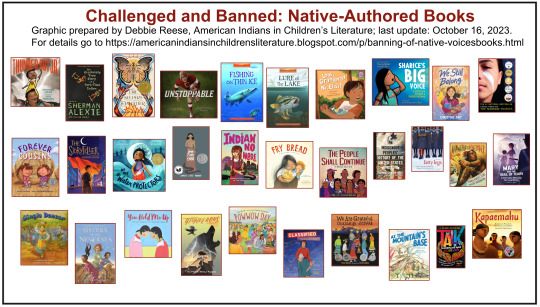
Firekeeper's Daughter written by Angeline Boulley (Sault Ste. Marie Tribe of Chippewa Indians)
Unstoppable: How Jim Thorpe and the Carlisle Indian School Football Team Defeated Army written by Art Coulson (Cherokee); illustrated by Nick Hardcastle (not Native)
Look, Grandma! Ni, Elisi! written by Art Coulson (Cherokee), illustrated by Madelyn Goodnight (Chickasaw)
Fishing on Thin Ice written by Art Coulson (Cherokee)
Lure of the Lake written by Art Coulson (Cherokee)
Sharice's Big Voice: A Native Kid Becomes a Congresswoman by Sharice Davids (Ho-Chunk); illustrated by Joshua Mangeshig Pawis-Steckley (Wasauksing)
We Still Belong by Christine Day (Upper Skagit); cover art by Madelyn Goodnight (Chickasaw)
The Marrow Thieves by Cherie Dimaline (Metis Nation of Ontario)
Forever Cousins by Laurel Goodluck (Mandan, Hidatsa and Tsimshian member); illustrated by Jonathan Nelson (Diné)
The Storyteller by Brandon Hobson (Cherokee)
We Are Water Protectors by Michaela Goade (Turtle Mountain Ojibwe); illustrated by Michaela Goade (Tlingit)
A Snake Falls to Earth by Darcie Little Badger (Lipan Apache)
Indian No More by Charlene Willing McManis (Confederated Tribes of Grande Ronde); cover art by Marlena Myles (Spirit Lake Dakota/Mohegan/Muscogee)
Fry Bread: A Native American Family Story by Kevin Maillard (Seminole); illustrated by Juana Martinez-Neal (not Native)
The People Shall Continue written by Simon Ortiz (Acoma Pueblo), illustrated by Sharol Graves (Absentee Shawnee Tribe of Oklahoma).
An Indigenous Peoples' History of the United States, for Young People by Debbie Reese (Nambé Owingeh) and Jean Mendoza (not Native), adapted from the original edition written by Roxanne Dunbar Ortiz (not Native)
Fatty Legs written by Margaret-Olemaun Pokiak-Fenton (Inuvialiut)
Hiawatha and the Peacemaker written by Robbie Robertson (Mohawk), illustrated by David Shannon (not Native)
Mary and the Trail of Tears by Andrea Rogers (Cherokee)
You Hold Me Up by Monique Gray Smith (Cree), illustrated by Danielle Daniel
Jingle Dancer by Cynthia Leitich Smith (Mvskoke), illustrated by Cornelius Van Wright (not Native) and Ying-Hwa Hu (not Native).
Sisters of the Neversea by Cynthia Leitich Smith (Mvskoke), cover illustration by Floyd Cooper (Mvskoke)
Thunderous written by M. L. Smoker (Assiniboine and Sioux tribes of Montana's Fort Peck Reservation) and Natalie Peeterse (not Native); illustrated by Dale Ray DeForest (Diné)
We Are Grateful written by by Traci Sorell (Cherokee Nation), illustrated by Frane Lessac (not Native)
At the Mountains Base written by Traci Sorell (Cherokee Nation), illustrated by Weshoyot Alvitre (Tongva, Cahuilla, Chumash, Spanish & Scottish)
"The Way of the Anigiduwagi" written by Traci Sorell (Cherokee Nation), illustrated by MaryBeth Timothy (Cherokee) in The Talk: Conversations about Race, Love and Truth edited by Cheryl and Wade Hudson
Classified: The Secret Career of Mary Golda Ross, Cherokee Aerospace Engineer written by Traci Sorell (Cherokee); illustrated by Natasha Donovan (Metis)
Powwow Day written by Traci Sorell (Cherokee); illustrated by Madelyn Goodnight (Chickasaw)
Kapaemahu written by Hinaleimoana Wong-Kalu (Kanaka Maoli), Dean Hamer (not Native), and Joe Wilson (not Native); illustrated by Daniel Sousa
[Full List by Debbie Reese]
#banned books#fuck maga#Native American#Native Hawaiian#Indigenous#books#Debbie Reese#Hinaleimoana Wong-Kalu#Dean Hamer#Joe Wilson#Daniel Sousa#Natasha Donovan#Traci Sorell#MaryBeth Timothy#Cheryl Hudson#Wade Husdon#Weshoyot Alvitre#Frane Lessac#Dale Ray DeForest#Natalie Peeterse#M. L. Smoker#Cynthia Leitich Smith#Floyd Cooper#Robbie Robertson#David Shannon#Monique Gray Smith#Danielle Daniel#Cornelius Van Wright#Ying-Hwa Hu#Andrea Rogers
20 notes
·
View notes
Note
Had any military leader in Gaia made bold, seemingly crazy ventures against their enemy that worked surprisingly well? Like for example Hannibal’s crossing of the alps, managing to drag a massive army and war elephants through massive icy mountains just to kick romes ass?
What a fun question!
Once when Zareen Empire and Mogdir Kingdom were at war, Zareen sent a giant bronze statue to Mogdir Capital as a peace offering. And when I say "giant", I really mean colossal! It would be the tallest, most impressive structure in Mogdir Kingdom.
Mogdir accepted it, but little did they know, this was a trick. Once it was brought to the capital city, the statue emitted a huge plume of toxic smog that covered the Arcadian Forest for weeks, enraging the local nymphs and prompting them to attack Mogdiri settlements.
In Mogdir's moment of weakness, Zareen was able to move in and do some real damage. The smog itself caused a lot of damage to soil, crops, and people for years to come. The mountain range separating the two kingdoms blocked the smog from drifting back into Zareenite territory, so they were largely shielded from the consequences.
But don't worry, Mogdir Kingdom got revenge centuries later when they agreed to release a thousand Zareenite prisoners of war. Zareen took the prisoners back into their homeland...only to find out that they had all been infected with lycanthropy. This began a wave of plague and chaos that took decades for Zareen to get under control.
There was also the time Etios Nation got so mad at Matuzu, they started a campaign to dump all the nation's sewage into the river that flows into Matuzu's Central Lake. This was incredibly expensive and inconvenient for Etios, and quite frankly...insane. But the nation's people were totally on board to #shitonmatuzu, and it didn't take long before Central Lake became a biohazard and Matuzu was forced to work out some kind of deal with Etios, granting them a big chunk of land that they still own to this day. Since then, local nymphs have prevented Etios from pulling this maneuver again, citing ecological damage. But for that brief moment in history, the Etiosi could tell Matuzu to "eat shit" and mean it!
Last but not least: the Seelie Court once had a territory dispute with the Unseelie Court (what else is new?) They were fighting over an island that sat right on the border. This island was abundant with resources, so it was valuable to them both. Queen Titania of the Seelie suggested that they break the island in half and divide the resources evenly, but Overlord Morgause was like, "FUCK U HO, EITHER I GET IT OR NO ONE DOES!" and just blew up the whole island. As in, fully wiped it off the map. Morgause didn't get any of its resources...but the important thing is, neither did Titania. B) Also thousands of innocent islanders died, but we don't talk about that...
*
Questions/Comments?
Lore Masterpost
Read the Series
7 notes
·
View notes